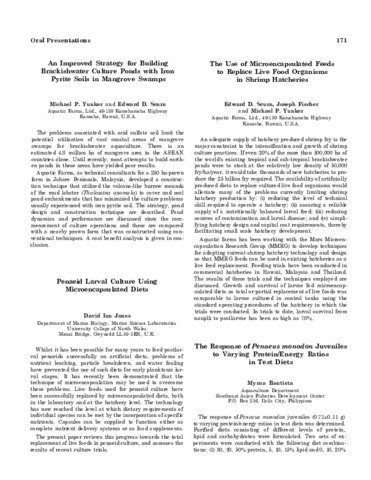An improved strategy for building brackishwater culture ponds with iron pyrite soils in mangrove swamps
Share
Abstract
The problems associated with acid sulfate soil limit the potential utilization of vast coastal areas of mangrove swamps for brackishwater aquaculture. There is an estimated 4.8 million ha of mangrove area in the ASEAN countries alone. Until recently, most attempts to build earthen ponds in these areas have yielded poor results.
Aquatic Farms, as technical consultants for a 250 ha-prawn farm in Johore Peninsula, Malaysia, developed a construction technique that utilized the volcano-like burrow mounds of the mud lobster (Thalassina anomala) to cover and seal pond embankments that has minimized the culture problems usually experienced with iron pyrite soil. The strategy, pond design and construction technique are described. Pond dynamics and performance are discussed since the commencement of culture operations and these are compared with a nearby prawn farm that was constructed using conventional techniques. A cost benefit analysis is given in conclusion.
Description
Abstract only.
Suggested Citation
Yunker, M. P., & Scura, E. D. (1985). An improved strategy for building brackishwater culture ponds with iron pyrite soils in mangrove swamps (Abstract only). In Taki Y., Primavera J.H. and Llobrera J.A. (Eds.). Proceedings of the First International Conference on the Culture of Penaeid Prawns/Shrimps, 4-7 December 1984, Iloilo City, Philippines (p. 171). Iloilo City, Philippines: Aquaculture Department, Southeast Asian Fisheries Development Center.

